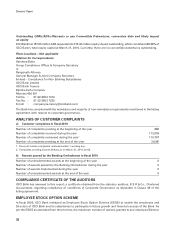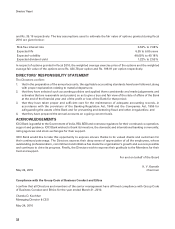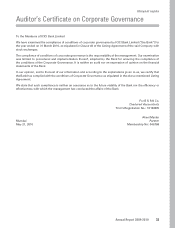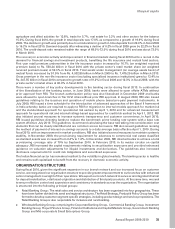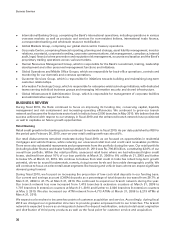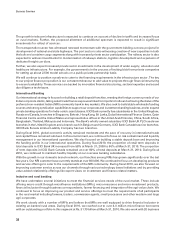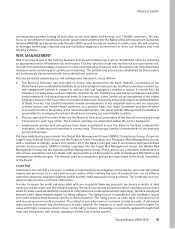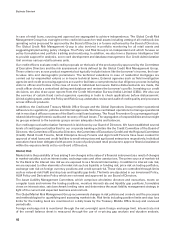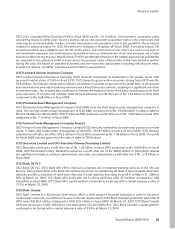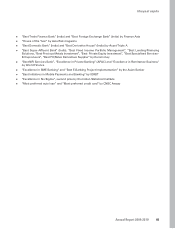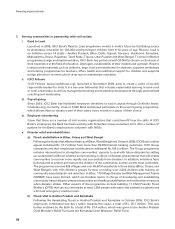ICICI Bank 2010 Annual Report Download - page 41
Download and view the complete annual report
Please find page 41 of the 2010 ICICI Bank annual report below. You can navigate through the pages in the report by either clicking on the pages listed below, or by using the keyword search tool below to find specific information within the annual report.
correspondent partners having 56 branches across nine states and serving over 100,000 customers. We also
focus on enrollment of beneficiaries under government schemes like the National Rural Employment Guarantee
Scheme (NREGS) and Social Security Pension (SSP) as well as migrant workers in urban areas. We will continue
to leverage technology channels and the facilitative regulatory environment to drive our inclusive and rural
banking initiative.
RISK MANAGEMENT
Risk is an integral part of the banking business and we aim at delivering superior shareholder value by achieving
an appropriate trade-off between risk and returns. The key risks are credit risk, market risk and operational risk.
Our risk management strategy is based on a clear understanding of various risks, disciplined risk assessment and
measurement procedures and continuous monitoring. The policies and procedures established for this purpose
are continuously benchmarked with international best practices.
The key principles underlying our risk management framework are as follows:
z The Board of Directors has oversight on all the risks assumed by the Bank. Specific Committees of the
Board have been constituted to facilitate focused oversight of various risks. Our Risk Committee reviews our
risk management policies in relation to various risks and regulatory compliance issues. It reviews key risk
indicators covering areas such as credit risk, interest rate risk, liquidity risk, and foreign exchange risk and the
limits framework, including stress test limits, for various risks. It also carries out an assessment of the capital
adequacy based on the risk profile of our balance sheet and reviews the status with respect to implementation
of Basel II norms. Our Credit Committee reviews developments in key industrial sectors and our exposure
to these sectors and reviews major portfolios on a periodic basis. Our Audit Committee provides direction
to and also monitors the quality of the internal audit function. Our Asset Liability Management Committee is
responsible for managing the balance sheet and reviewing our asset-liability position.
z Policies approved from time to time by the Board of Directors/Committees of the Board form the governing
framework for each type of risk. The business activities are undertaken within this policy framework.
z Independent groups and sub-groups have been constituted across the Bank to facilitate independent
evaluation, monitoring and reporting of various risks. These groups function independently of the business
groups/sub-groups.
We have dedicated groups namely the Global Risk Management Group (GRMG), Compliance Group, Corporate
Legal Group, Internal Audit Group and the Financial Crime Prevention and Reputation Risk Management Group,
with a mandate to identify, assess and monitor all of the Bank’s principal risks in accordance with well-defined
policies and procedures. GRMG is further organised into the Credit Risk Management Group, the Market Risk
Management Group and the Operational Risk Management Group. These groups are completely independent of
all business operations and coordinate with representatives of the business units to implement ICICI Bank’s risk
management methodologies. The internal audit and compliance groups are responsible to the Audit Committee
of the Board.
Credit Risk
Credit risk is the risk that a borrower is unable to meet its financial obligations to the lender. All credit risk related
aspects are governed by a credit and recovery policy which outlines the type of products that can be offered,
customer categories, targeted customer profile and the credit approval process and limits. The credit and recovery
policy is approved by our Board of Directors.
In order to assess the credit risk associated with any corporate financing proposal, we assess a variety of risks
relating to the borrower and the relevant industry. We have a structured and standardised credit approval process
which includes a well established procedure of comprehensive credit appraisal and credit rating. We have developed
internal credit rating methodologies for rating obligors. The rating factors in quantitative and qualitative issues
and credit enhancement features specific to the transaction. The rating serves as a key input in the approval as
well as post-approval credit processes. The rating for every borrower is reviewed at least annually. A risk based
asset review framework has also been put in place wherein the frequency of asset review would be higher for
cases with higher exposure and/or lower credit rating. Industry knowledge is constantly updated through field
visits and interactions with clients, regulatory bodies and industry experts.
39
Annual Report 2009-2010
khayaal aapka



